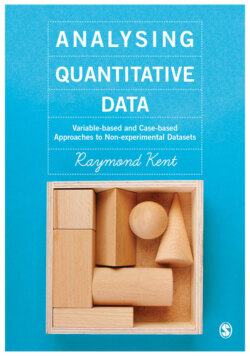Читать книгу Analysing Quantitative Data - Raymond A Kent - Страница 40
На сайте Литреса книга снята с продажи.
Computing totals
ОглавлениеIt is sometimes helpful to add together the values recorded either for two or more variables within cases or for a single variable across cases – provided, however, they are, or can reasonably be assumed to be, metric values. In the alcohol marketing data, respondents were asked how important they thought it was to choose a popular well-known brand when deciding to buy each of several different products. The SPSS results are shown in Figure 2.9. If the codes allocated (5 for Very important and so on) can reasonably be treated as calibrations of the degrees of importance, then the nine items can be treated as a summated rating scale and totals calculated for each of the respondents who gave a rating. The maximum total score is 45 (the person thinks choosing popular known brands is Very important for all items). The minimum depends on what the researcher decides to do with the ‘Don’t know’ answers. If given a value of 0 (as in Figure 2.10) this will mean a minimum score of 0 if somebody responds ‘Don’t know’ to each item. Indeed, an individual respondent will achieve a lower total score if any responses are ‘Don’t know’. Alternatively, these answers could be treated as a missing value and ignored in the calculation.
Figure 2.9 The importance of choosing well-known brands
Figure 2.10 Total scores in brand importance
Figure 2.10 shows the frequency of each total score calculated by SPSS. How to do this in SPSS is explained in Box 2.4. Thus two respondents had a score of 0, so they indicated ‘Don’t know’ for each item. One person scored the maximum of 45, but the majority had scores somewhere in the middle. There are various ways in which a distribution like this can be summarized, including creating class intervals as in the previous section, but other ways will be explored in Chapter 4.
